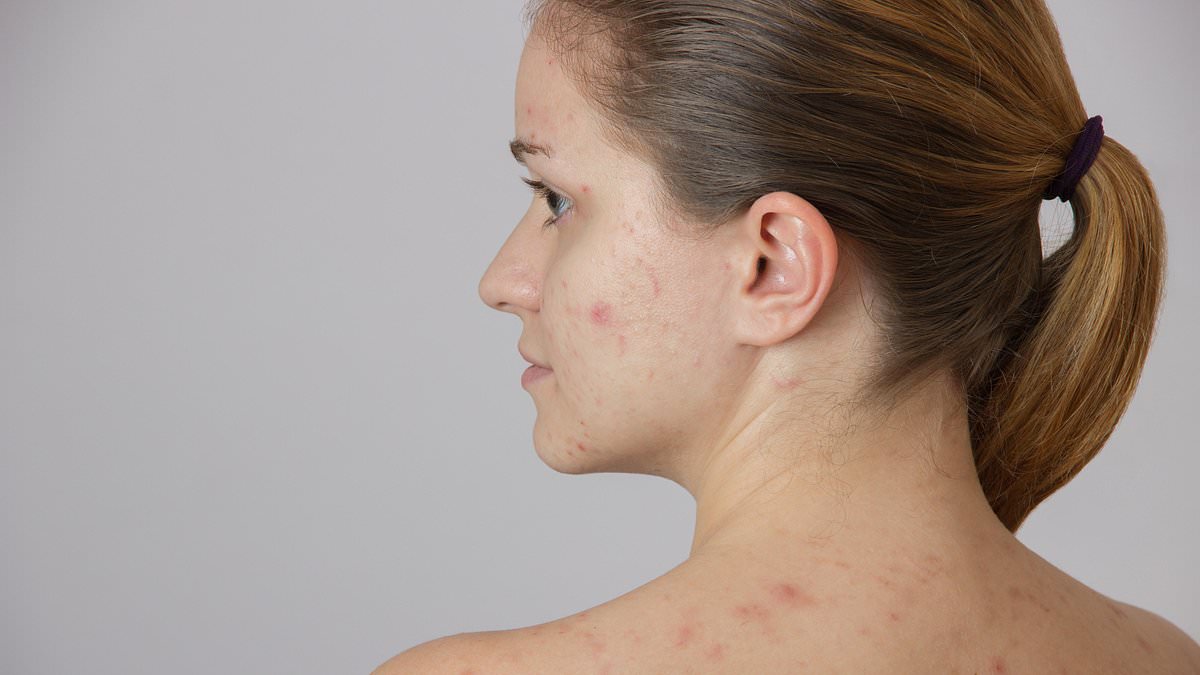Tens of millions of people suffer from acne on a day-to-day basis, with pimples and zits popping up across their face and body, blemishing their appearance and diminishing self confidence.
While some turn to home remedies for quick fixes or visit their dermatologist for more serious cases, the location of pimples can reveal the best treatment for clearing up embarrassing acne spots.
Dr Charles Puza, a New York City-based board-certified dermatologist, posted several videos to his nearly 2million TikTok followers breaking down the causes of acne based on where across the body it appears – and how to clear things up.
Two common places pimples may appear are the jawline and chin. Dr Puza explains this acne is likely hormonal. Hormonal acne is when breakouts occur in adulthood. These can range from blackheads and whiteheads to more painful cysts.

Dr Charles Puza, a New York City-based board-certified dermatologist, posted several videos to his nearly 2million TikTok followers breaking down the causes of acne based on where across the body they appear – and how to clear things up
Acne cysts are large pus-filled pimples deep beneath the skin that can lead to permanent scarring.
Hormonal acne is linked to the overproduction of sebum, an oily substance present in skin glands, which clogs pores and leads to pimples.
It is often treated with antibiotics and prescription-strength skin creams. Dr Puza recommended spironolactone, a doctor-prescribed medication that helps reduce hormones that produce the pore-clogging sebum.
A non-prescription option is spearmint tea, Dr Puza added, explaining the drink has anti-hormonal properties that may help clear skin.
If you are experiencing breakouts on your cheeks, your pillowcase could be to blame. Acne here could be due to inflammation, requiring anti-inflammatory treatments like creams and face washes containing benzoyl peroxide.
Along with anti-inflammatory treatments, Dr Puza recommends you wash your pillowcase often to rid it of germs and bacteria.
For pesky nose pimples, overactive oil glands are likely to blame. Products containing zinc and salicylic acid can work to clear these blemishes.
For breakouts beyond the face, Dr Puza said tight and sweaty clothing can lead to acne on the back and other parts of the body. Additionally, for back acne, the dermatologist suggests limiting your intake of whey protein because it cane cause back breakouts to flare up.
And for people suffering from pimples or rough skin on the arms, it likely isn’t acne at all, but a condition called keratosis pilaris, a benign skin condition that causes rough patches and tiny bumps on the upper arms, cheeks or buttocks.
For smooth skin, Dr Puza recommends soaps and body lotions containing urea, glycolic acid and lactic acid, which slowly exfoliate skin to rid it of bumps.
Acne is the most common skin condition in the US, with tens of millions of people experiencing the issue every year.
It normally strikes first in puberty affecting adolescents and young adults, leaving them with small or large whitehead or blackhead pimples and cysts.
The condition is caused by hair follicles becoming plugged with oil or dead skin cells, which can be a result of shifts in hormones like testosterone, some cosmetic products and certain medications.
Treatment includes various creams and antibiotic, as well as injections and lifestyle changes.
However, some patients can be left with the condition for years.
In severe cases, patients may suffer scarring.
And, studies have shown that people with acne suffer certain social consequences – they are less likely to be hired, dated or make friends easily than those who have clear skin.
Researchers at Brigham and Women’s Hospital in Massachusetts also found people were less likely to post photos with them online.
For the study, researchers recruited 1,300 people and showed them an image of someone with clear skin, mild or severe acne before asking them a series of questions.
Researchers said people were stigmatizing those suffering from acne and urged health insurance companies to cover treatment for it. Currently, most consider it a ‘cosmetic issue’ and patients must pay full price for treatments.








